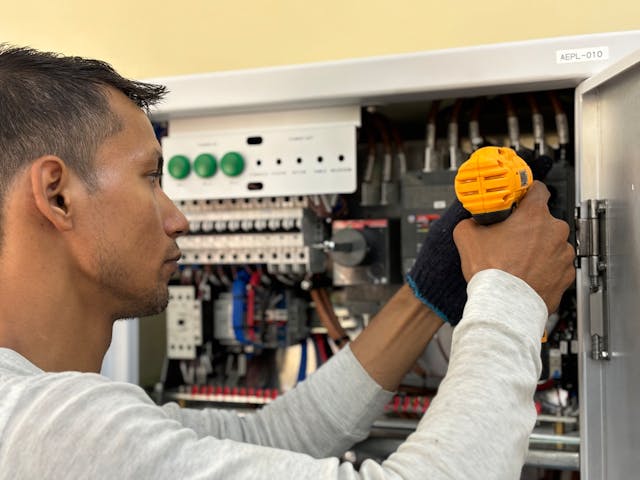The landscape of residential power security has undergone a dramatic transformation over the past decade. What once seemed like a luxury reserved for hospitals and data centers has become an essential consideration for homeowners across North America. This shift reflects not only technological advancement but also a fundamental change in how we perceive and depend on electrical reliability in our daily lives.
The Growing Dependency on Continuous Power
Modern homes operate as interconnected ecosystems where electricity powers far more than lights and appliances. Home offices require uninterrupted connectivity for remote work. Medical equipment demands constant power for health monitoring and treatment. Smart home systems control everything from security to climate, creating a web of electrical dependency that makes power interruptions increasingly disruptive.
The frequency and duration of power outages have increased significantly due to aging infrastructure and extreme weather events. Grid operators struggle to maintain reliability as demand surges and equipment ages beyond its intended lifespan. This reality forces homeowners to reconsider their vulnerability and explore proactive solutions for maintaining power continuity.
Understanding Modern Power Protection Technology
Contemporary power protection systems have evolved far beyond the noisy, unreliable units of previous generations. Generac residential generators exemplify this evolution, incorporating sophisticated monitoring systems, automatic transfer switches, and weather-resistant enclosures that ensure reliable operation when needed most.
These systems detect power loss within seconds and automatically start, transferring the electrical load seamlessly. Advanced controllers manage the startup sequence, monitor operating parameters, and even conduct self-diagnostic tests to ensure readiness. This automation eliminates the need for manual intervention during stressful outage situations.

The Economics of Power Protection
The financial equation for home power protection has shifted dramatically in recent years. Insurance companies increasingly recognize the value of backup power systems, offering premium reductions for protected homes. The prevention of food spoilage, basement flooding, and frozen pipes during extended outages often justifies the investment within a single major event.
Property values benefit from permanent power protection installations. Real estate professionals report that homes with integrated backup systems command premium prices and sell faster than unprotected properties. This market recognition transforms power protection from an expense into a value-adding investment.
Installation Considerations and Best Practices
Proper installation determines the long-term reliability and safety of any power protection system. Professional assessment begins with load calculation to determine appropriate system sizing. Critical circuits receive priority, ensuring essential functions continue during outages while managing total power consumption effectively.
Location selection requires careful consideration of noise regulations, maintenance access, and aesthetic impact. Modern installations integrate seamlessly with home architecture, utilizing screening and strategic placement to minimize visual impact. Proper ventilation and drainage prevent operational issues and extend equipment life.
Maintenance and Long-term Reliability
Regular maintenance ensures power protection systems remain ready for emergency activation. Modern units incorporate self-testing capabilities that exercise the system periodically, identifying potential issues before they compromise reliability. Professional annual inspections complement automated monitoring, addressing wear items and updating software as needed.
Fuel management represents a critical maintenance aspect. Natural gas connections eliminate fuel storage concerns, while propane systems require monitoring and periodic refilling. Diesel units need fuel treatment to prevent degradation during extended standby periods. Understanding these requirements ensures reliable operation when power protection becomes essential.

The Environmental Perspective
Contemporary power protection systems address environmental concerns through improved efficiency and cleaner operation. Advanced engine designs minimize emissions while maximizing fuel efficiency. Sound attenuation technology reduces noise pollution, making systems neighborhood-friendly. Some installations incorporate renewable energy components, creating hybrid systems that minimize environmental impact.
The ability to maintain home heating and cooling during outages reduces the need for temporary relocations, decreasing transportation emissions and hotel resource consumption. This broader environmental benefit often goes unrecognized but contributes significantly to overall sustainability.
Future Trends in Residential Power Security
The future of home power protection promises even greater integration with smart home technology and renewable energy systems. Artificial intelligence will optimize system operation, predicting maintenance needs and adjusting performance parameters automatically. Battery storage integration will provide instantaneous backup while generators start, eliminating even brief power interruptions.
Grid modernization efforts may reduce outage frequency but won’t eliminate the need for backup power. Climate change projections suggest more frequent extreme weather events, reinforcing the importance of residential power security. Forward-thinking homeowners recognize this trend and invest accordingly.
Conclusion
The evolution of home power security reflects our society’s increasing dependence on reliable electricity. Modern solutions offer sophisticated, automated protection that operates seamlessly when grid power fails. The combination of technological advancement, economic incentives, and growing awareness of vulnerability drives adoption across diverse communities. Investing in residential power protection represents more than purchasing equipment; it’s a commitment to maintaining quality of life regardless of external circumstances. As our homes become increasingly connected and dependent on continuous power, the wisdom of proactive protection becomes undeniable. The question is no longer whether to protect your home’s power supply, but rather how to implement the most effective solution for your specific needs and circumstances.



